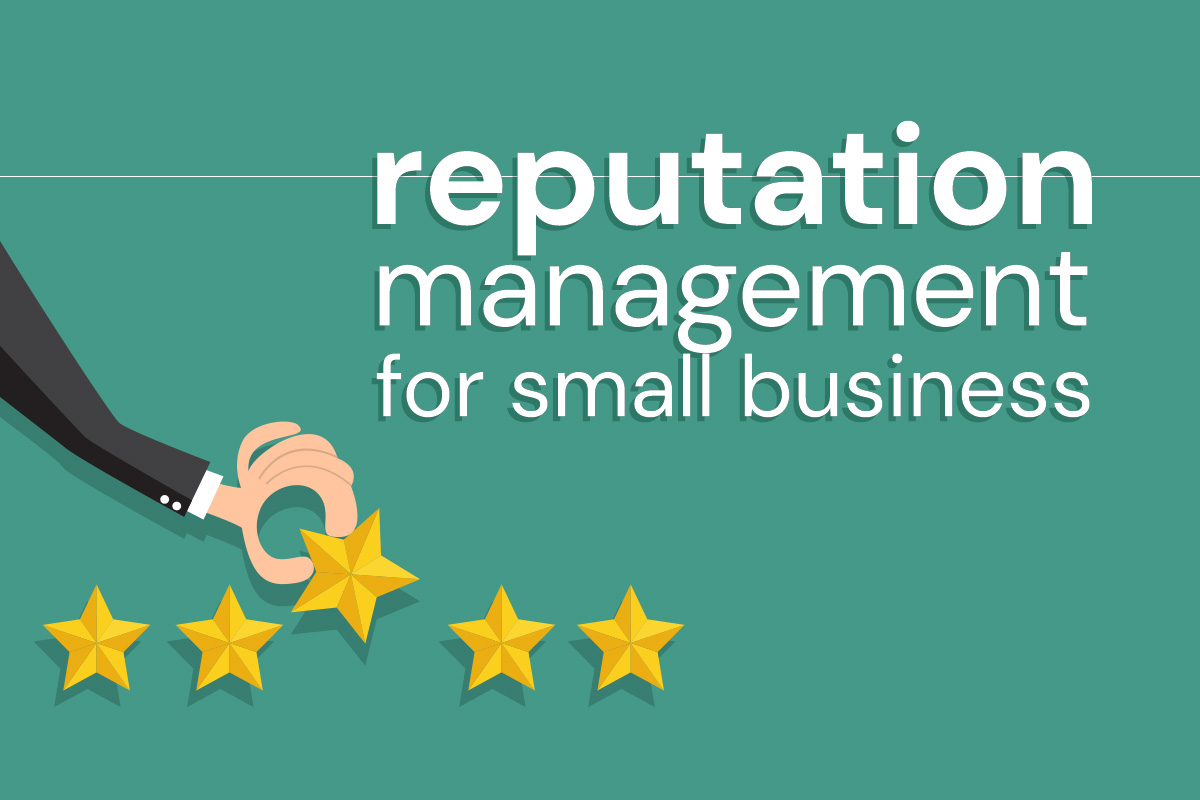If your business relies on reviews, you can’t afford to be passive about your reputation. Online reputation management attempts to influence online information to shape the public perception of a person or organization. Every time you respond to a negative review, you’re engaging in reputation management. If you post a thank-you message to veterans on Memorial Day, you’re engaging in reputation management—showing that you or your business respects and is sympathetic to veterans. Despite how essential an online reputation is, most small- and medium-sized businesses do not invest in communication. As a result, online interactions can be inconsistent or even incorrect.
If your business is willing to accept feedback, you have to be ready to respond to that feedback in a prompt manner. But what if your business attracts a lot of criticism? What if your employees don’t have a clear definition of what is appropriate and inappropriate on social media? And worst of all, what happens if your competitors leverage this to benefit themselves? You need to form a plan for your online reputation management.
Step 1: Decide What Information to Track
You’ll be setting up alerts to tell you when you’re mentioned on the web, so it’s important to clarify what people will say when talking about your business. At a bare minimum, we recommend setting up alerts for the following terms:
- Company name
- Variations on your company name—for example, Tar-zhay for Target, or Marks & Sparks for Marks & Spencer
- Company website URL
- Names of your products
- Names of your CEO and other senior employees
- Names of close competitors
Step 2: Set up Your Own Social Media Accounts
Not every social media platform is appropriate for every business, but one key criterion to consider is what platforms your customers are using to talk about you. If your customers are talking about you on Twitter, you need to have a Twitter account. If your customers are pinning images of your products, you need to have a Pinterest account.
Another criterion for consideration—what type of product you offer. Companies with products that have visual appeal—clothes, food, housewares, fitness—should strongly consider Instagram and Pinterest accounts. An automotive repair business or attorney would likely find these types of accounts useless. Keep in mind that there are some smaller social media platforms that your customers might be using. Architects, interior decorators, and furniture stores should consider a Houzz profile. Regardless of which social media platforms you choose, you must be prepared to respond to your customers through it.
Step 3: Set up Alerts
It’s easy to miss a bad review on Facebook or Yelp, when there are so many outlets for reviews. reviews are one easy and free tool to monitor your company’s mentions on the web. In fact, we recommend that everyone set up a Google Alert for your own name. Here are some additional tools that can help track your terms defined in Step 1.
Cyfe – to track your social media mentions, your Twitter followers over time, and Facebook demographics
Mention – Twitter, Facebook, & Instagram integrations let you reply and engage right from your Mention dashboard
Sprout Social – which allows you to personally connect with customers and solve issues
And don’t forget good old Google Analytics, Twitter Analytics, and Pinterest Analytics to get a full picture of how your social media presence is performing.
Step 4: Respond to Your Customers
When you see a mention of your business:
Act fast. Social media is real-time, and this is your opportunity to correct a problem before it spirals into a pile-on.
Always be polite. No matter how rude the customer is, be courteous and respectful. DON’T use a canned response. Try to understand the customer’s frustrations from his point of view. Even if you can’t resolve the issue, you’ll demonstrate to other customers reading the negative review that you’re reasonable.
Step 5: Get Ahead of the Game
A reactive approach is good for the short-term, but it’s also important to proactively build a strong, positive brand reputation that will ultimately be immune to future crises. A good on-site and off-site SEO strategy will be key here, and, as we always say, there’s no substitute for authentic, relevant content.
There may come a time when your online presence outstrips your ability to respond to or manage it, and you may need a third-party reputation manager. If that’s the case, feel free to contact us. We are here to help!






